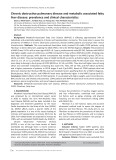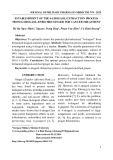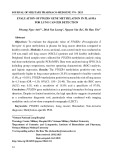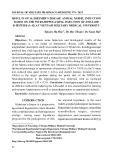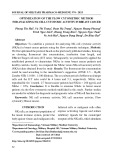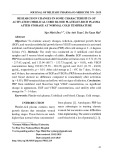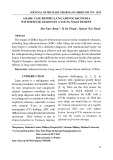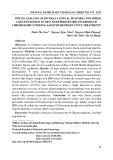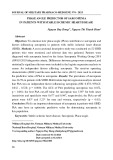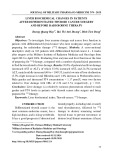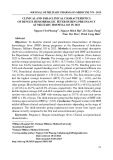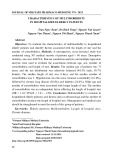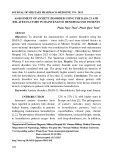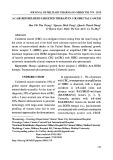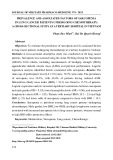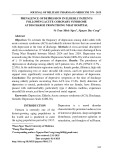
JOURNAL OF MILITARY PHARMACO-MEDICINE N04 - 2025
175
PREVALENCE AND CHARACTERISTICS OF NON-ALCOHOLIC
FATTY LIVER DISEASE IN PATIENTS WITH FATTY LIVER
DIAGNOSED BY ULTRASOUND
Tran Thi Khanh Tuong1*, Tran Kinh Thanh2, Au Nhat Huy3
Abstract
Objectives: To determine the prevalence and characteristics of non-alcoholic
fatty liver disease (NAFLD), including steatosis and fibrosis, in patients with fatty
liver detected by ultrasound. Methods: A cross-sectional study was conducted on
303 patients diagnosed with fatty liver by ultrasound at People’s Hospital 115 from
August 2019 to October 2020. Steatosis and fibrosis were assessed using
FibroScan, employing the controlled attenuation parameter (CAP) and liver
stiffness measurements (LSM). Statistical analysis was performed using SPSS
version 22.0. Results: The prevalence of NAFLD in patients with fatty liver
detected by ultrasound and assessed by FibroScan using CAP probe was 66%.
Among patients with fatty liver on ultrasound who have NAFLD, the distribution
of liver fat levels was as follows: S1 = 20.5%; S2 = 27%; S3 = 52.5%. The stages
of liver fibrosis were: F0 - F1 at 74.5%; significant fibrosis at 25.5%, advanced
fibrosis at 11%, and cirrhosis at 6%. NAFLD patients exhibited higher body mass
index (BMI), waist circumference, cholesterol, triglyceride, type 2 diabetes
mellitus (T2DM), and obesity rates compared to those without NAFLD.
Conclusion: The study underscores the high prevalence of NAFLD in patients
with fatty liver detected by ultrasound, with the highest proportion of patients in
stage S3, while 25.5% of the cases are classified as significant fibrosis, which
indicates a considerable level of liver damage.
Keywords: Fatty liver; Non-alcoholic fatty liver disease; Ultrasound;
FibroScan; Steatohepatitis.
1Internal Medicine Department, Faculty of Medicine, Pham Ngoc Thach University of Medicine
2People’s Hospital 115
3Internal Medicine Department, Faculty of Medicine, Tan Tao University
*Corresponding author: Tran Thi Khanh Tuong (khanhtuong@pnt.edu.vn)
Date received: 29/8/2024
Date accepted: 23/12/2024
http://doi.org/10.56535/jmpm.v50i4.999





